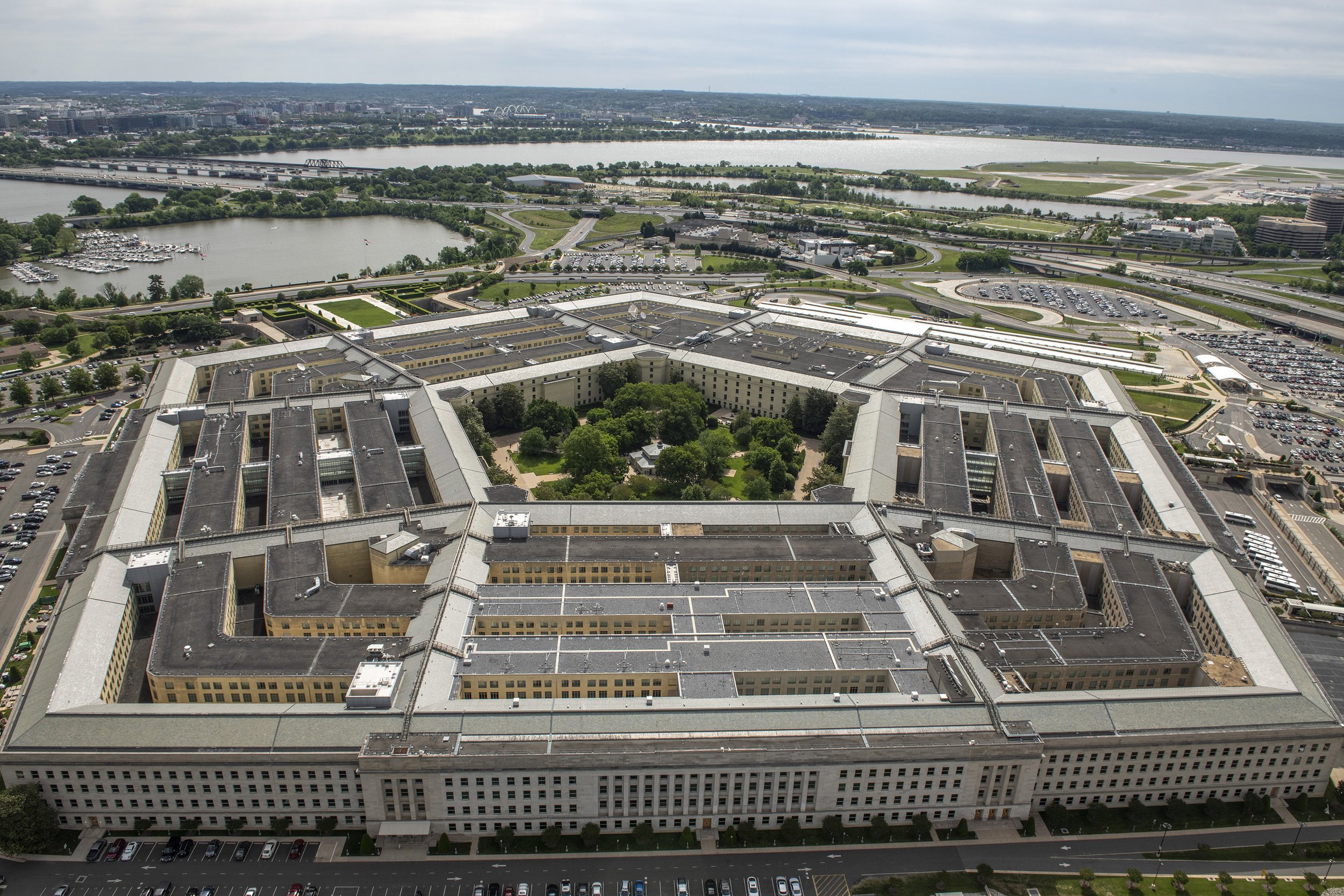'Escalating tensions with the UK and the US in the Middle East: how much should we worry?'
Aerial View of the US Pentagon, 2020 // Photo Courtesy: Wikimedia Commons
Articles decrying the coming of World War Three have dominated the press for the past week. Whether in the form of Boris Johnson proclaiming the virtues of conscription (as he stands conveniently above any age limit and precariously below the most pitiful of fitness standards) or the chilling news of US airstrikes in Iraq and Syria, it isn’t hard to tie the threads into an apocalyptic headline. With Russia’s static offensive in Ukraine rumbling on into its third year, could escalation in the Middle East finally tip the geo-political scales into a global conflict?
The drone strike against the US military outpost in Jordan’s borderlands (Tower 22) - which killed 3 US servicemen - did not occur in a vacuum. Since invading Iraq in 2003, the US military has never left. In fact, they actually increased their capacity in 2014 in order to combat ISIS; currently, 2500 US military personnel remain in Iraq. Though ISIS’s presence in the region has diminished, the Islamic Resistance Movement (a blanket phrase for the Iranian funded militia groups operating in Iraq and Syria) has remained a constant threat to stability in the region. Prior to the attack on Tower 22, Al Jazeera’s Resul Serdar reported at least 100 previous attacks on US installations since October 7th.
In an unusual moment of US military restraint, President Biden took three days to retaliate. The US Central Command stated ‘125 precision munitions hit 85 targets’ across Iraq and Syria, primarily targeted at the militia’s weaponry stores, supply routes and intelligence facilities. Much more concerningly, they also targeted Iran’s Islamic Revolutionary Guard Corps (IRGC) which has operated in Iraq and Syria for over a decade. The IRGC has since returned many of its forces into Iran, in a move that looks like a concession intended to de-escalate the conflict and prevent open war. The Commander of the largest group behind the attack on Tower 22, Kataib Hezbollah, has since announced it will cease all attacks on US military installations. Though a rapid escalation of the conflict is still a possibility, Iran’s attempts to distance itself from direct involvement and Biden’s reluctance to bombard Iranian territory make an open confrontation between Iran and the US highly unlikely. However, with Trump calling for “peace through strength,” a re-escalation with Iran could accompany his potential second term in the White House.
Travelling South to Yemen, the UK and US continue to use airstrikes to combat the Iranian-backed Houthis who have been attacking the Gulf of Aden- a section of the red sea shipping lane which facilitates 12% of global trade. The irony in this is that it isn’t American trade that is threatened, but Chinese. America’s decision to, as US Secretary of Defense Austin Lloyd put it, “take away capability from the Houthis” to attack the shipping lane, was taken to ensure American control over a route that China depends on. Mohamed-al-Atifi, commander of the Houthi forces, stated: “we are prepared for a long-term confrontation with the forces of tyranny,” indicating that if the airstrikes on Houthi forces don’t successfully eliminate Houthi capabilities, the US and UK may consider an on-land offensive.
At the heart of this crisis is the on-going decimation of the Gaza strip. The Iranian Ministry has accused Israel’s “genocide of the Palestinians with the unlimited support of the US,” as being the source of these tensions. Whilst this wilfully neglects the role Hamas’ brutal attack on October 7th played in igniting the conflict, it still doesn’t detract from some of the statement’s validity. HA Hellyer, a military analyst at the Royal United Service Institute, speculated that the US using leverage to bring about a ceasefire “would really diminish the tensions in the region and remove the fuel for this sort of escalation taking place.” The Palestinian Ministry of Health has reported that 27,000 Gazans have been slaughtered during this conflict, and between 50-62% of Gaza’s buildings have been razed to the ground. One has to wonder whether even a ceasefire could begin to heal the wounds - both geo-political and human - caused by the Israeli bombardment.
Since the collapse of Ottoman Rule in 1918, tensions have never ceased in the Middle East: the current conflagration represents but another chapter in the ever-unfolding human tragedy in the region. Whilst escalations may continue, the tremendous military superiority of the US and its allies mean that any escalation, even to outright conflict with Iran, would present little immediate danger to the cottages of Kent or the brownstones of Brooklyn. The real threat radiates from Russia’s ideological commitment to dominance in Eastern Europe and China’s designs on Taiwan. Whether through a land war with Russia or a trade war with China, the West finds itself on the edge of an inferno.

